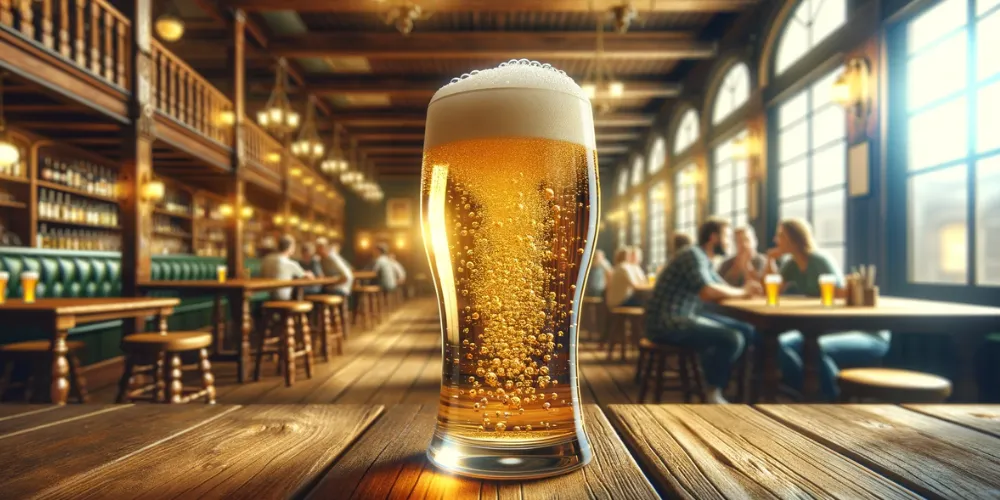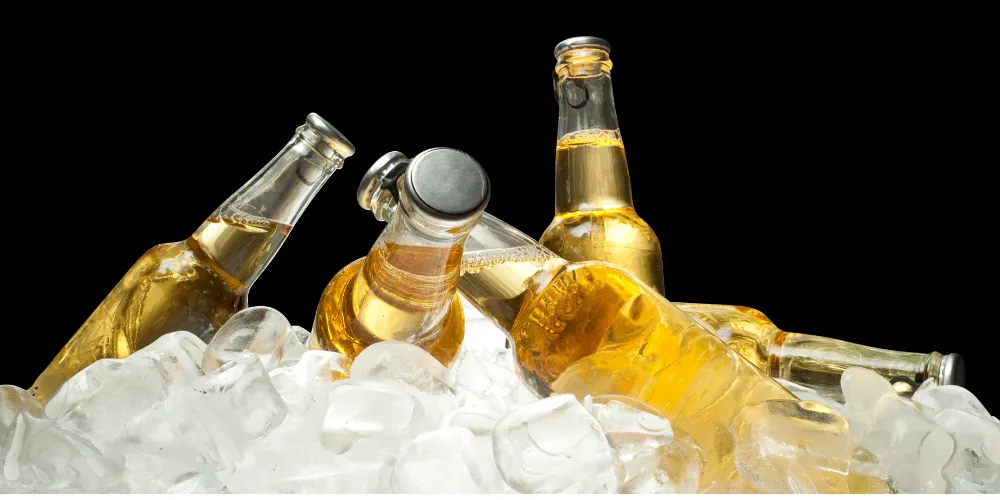Raise your glass, and let’s get straight to it: Are beers carbonated?
Beers are typically carbonated, containing carbon dioxide gas, creating bubbles and fizz. This carbonation can occur naturally during the fermentation process or be added artificially. The presence of carbonation gives beer its characteristic effervescence and mouthfeel.
In the next few moments, we’ll unravel the science behind the fizz, explore the history of carbonation in beer, and discover why it’s the secret ingredient that keeps us coming back for more. Cheers to exploring the world of carbonated brews!
The Science Behind Beer Carbonation

The science of beer carbonation is a fascinating blend of biology and chemistry, integral to the brewing process. The journey begins with the simple yet complex fermentation stage and extends to modern techniques for refining the beer’s character.
- Fermentation – The Natural Process: The magic starts with fermentation. Yeast, a remarkable microorganism, interacts with sugars in the wort, the liquid extracted from mashed grains. This interaction produces alcohol and releases carbon dioxide (CO2). It’s this CO2 that naturally carbonates the beer, giving it the initial fizz and effervescence.
- Forced Carbonation – Adding Consistency: In modern brewing, consistency is key. To achieve a uniform level of carbonation, many brewers employ forced carbonation. This involves infusing the beer with CO2 under pressure after fermentation. This controlled process allows brewers to achieve the desired fizziness for each beer style, enhancing the sensory experience.
- The Impact on Mouthfeel and Taste: Carbonation profoundly affects the beer’s mouthfeel and overall flavor. The size of the CO2 bubbles can vary, influencing the beer’s texture. Smaller bubbles offer a smoother, creamier feel, while larger bubbles create a more vigorous, tingling sensation. Additionally, the level of carbonation can accentuate different flavors in the beer. A highly carbonated beer often feels crisper and more refreshing, while one with lower carbonation levels might present richer, more robust flavors.
- Balancing Carbonation with Style: Each beer style has its unique carbonation needs. Lagers, ales, stouts, and specialty brews require different carbonation levels to bring out their best qualities. This balancing act is crucial in crafting a beer that aligns with the brewer’s vision and the drinker’s expectations.
Carbonation in beer is not just about creating bubbles but crafting a complete sensory experience. From the natural effervescence born in fermentation to the precise adjustments made through forced carbonation, each step is a testament to the intricate and thoughtful art of brewing.
Brewing Process and Carbonation
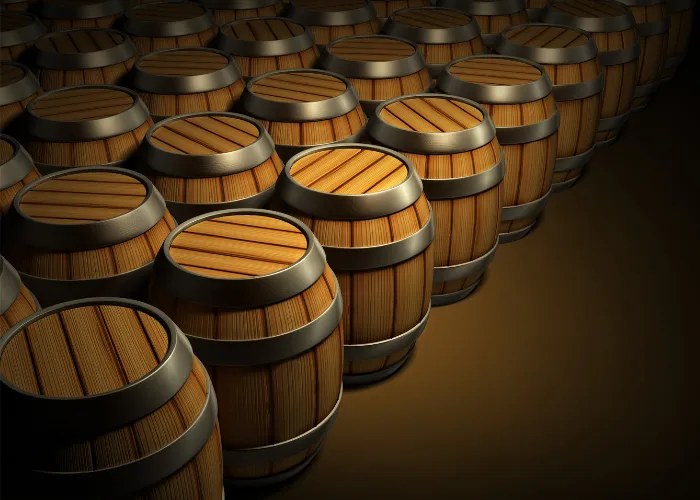
The transformation from grain to glass in beer brewing is a captivating journey, particularly when exploring the role of carbonation. The process unfolds in several key stages:
- Malt and Mash: The first step is preparing the malt. Grains, typically barley, are soaked, germinated, and dried. The malt is then mashed, activating enzymes that convert starches into fermentable sugars. This step lays the foundation for the beer’s flavor and carbonation potential.
- Boiling and Hops: After mashing, the resulting liquid, called wort, is boiled. This step is crucial for sterilization and preparing the wort for fermentation. Hops are added at this stage, contributing to the beer’s flavor, aroma, and even influencing the final carbonation feel.
- Fermentation: The heart of carbonation happens during fermentation. Yeast is added to the cooled wort, consuming the sugars and producing alcohol and CO2. This natural release of CO2 gas is what initially carbonates the beer.
- Maturation and Conditioning: Following fermentation, the beer is allowed to mature. This phase lets flavors develop and stabilize. Conditioning, often at controlled temperatures, further refines these flavors and can adjust the carbonation levels.
- Forced Carbonation: Some brewers opt for forced carbonation, a modern method where CO2 is added directly to the beer under pressure. This technique ensures a consistent and specific level of carbonation, matching the desired profile for each beer type.
- Final Preparation for Bottling: The last steps before bottling include filtration and pasteurization to ensure clarity and longevity. Careful measures are taken to maintain the desired carbonation levels during packaging, whether in bottles, cans, or kegs.
Each stage in the brewing process plays a critical role in determining the final carbonation level of the beer. From the initial preparation of ingredients to the meticulous control during fermentation and conditioning, carbonation is more than just creating fizz; it’s about crafting a perfect balance.
This balance ensures that the carbonation complements the beer’s flavor, aroma, and mouthfeel, making the journey from grain to glass a testament to the art and science of brewing.
Factors Affecting Carbonation Levels
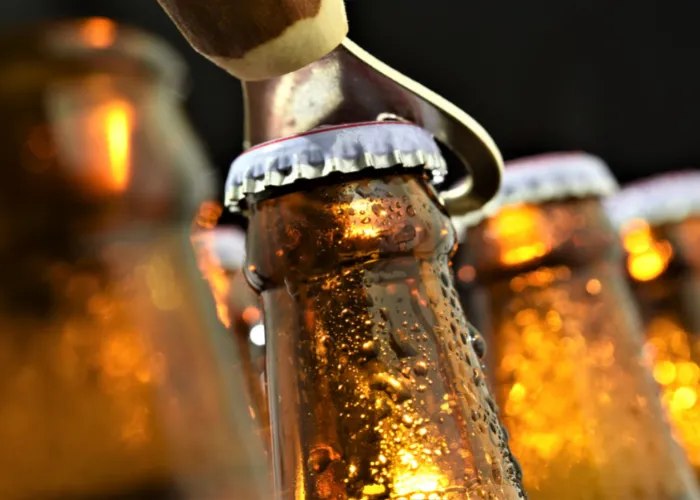
Many factors influence beer’s carbonation, each playing a pivotal role in achieving the ideal effervescence. Understanding these elements is key to crafting a beer that perfectly balances being too flat and excessively fizzy.
- Yeast Strain and Fermentation: The type of yeast used in brewing significantly impacts carbonation. Different yeast strains have varying fermentation rates and efficiencies, influencing the amount of CO2 produced. Additionally, the duration and conditions of the fermentation process, such as temperature and pressure, can alter the level of carbonation.
- Sugar Content in Wort: The sugar content in the wort, the sweet liquid extracted from malted grains, is crucial. Higher sugar levels lead to more fermentation, producing more CO2 and, consequently, higher carbonation.
- Brewing Techniques: Brewing methods also play a critical role. Techniques such as sparging (rinsing the grains) and boiling can affect the final carbonation. The way the wort is cooled and the time allowed for yeast to act before bottling are also influential factors.
- Type of Brewing Vessel: The type of vessel used for fermentation can affect carbonation. Open versus closed fermentation systems yield different levels of CO2 retention, influencing the beer’s carbonation.
- Temperature and Pressure during Storage and Serving: Post-fermentation, the temperature and pressure at which beer is stored and served are crucial. Cooler temperatures help maintain higher levels of dissolved CO2, preserving carbonation. The serving pressure also impacts how much CO2 remains in solution when the beer is served.
- Bottle Conditioning: For beers that undergo bottle conditioning, where secondary fermentation happens in the bottle, factors like the amount of priming sugar added, the yeast’s health, and the storage conditions of the bottles all contribute to the final carbonation level.
- Forced Carbonation Practices: In forced carbonation, the settings of carbonation equipment, such as pressure gauges and temperature controls, determine the precise carbonation level.
Each of these factors requires careful consideration and balance. A brewer must harmonize these variables to create a beer with the desired carbonation level, ensuring that each sip delivers the intended flavor, aroma, and mouthfeel.
The Role of Carbonation in Beer Flavor and Aroma
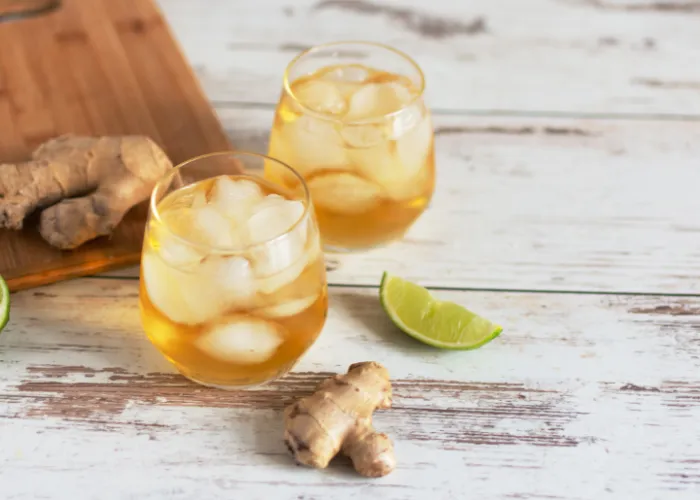
Carbonation in beer significantly shapes its flavor and aroma. As you sip, CO2 bubbles burst, releasing aromatic compounds that enhance the beer’s scent. This makes the aroma more vibrant.
Flavor-wise, higher carbonation lends a sharper, refreshing taste, while beers with less fizz showcase richer, deeper flavors.
The carbonation level also influences mouthfeel: more carbonated beers are lighter and balance sweetness well, while those with less carbonation feel creamier, suiting heavier beers like stouts. Overall, carbonation is key in defining a beer’s sensory experience.
Carbonation in Different Beer Styles
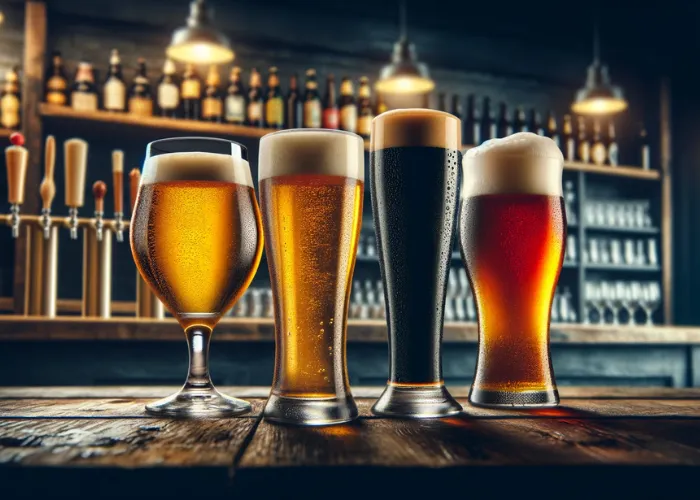
Different beer styles have distinct carbonation levels that shape their unique taste and mouthfeel:
- Lagers: Typically highly carbonated, lagers are known for their crisp and refreshing taste. This high level of fizz complements their light body and subtle flavors.
- Ales: Ales, including varieties like IPAs and pale ales, usually have moderate carbonation. This balance enhances their richer, more complex flavors without overpowering them.
- Stouts and Porters: These beers generally feature lower carbonation. The reduced fizziness allows their rich, deep flavors, like chocolate and coffee, to stand out.
- Nitro Beers: Infused with nitrogen, nitro beers are characterized by their creamy, silky mouthfeel. They have very fine bubbles, creating a unique smoothness ideal for styles like stouts.
The level of carbonation in beer is not a one-size-fits-all aspect. It varies significantly across different beer styles, each tailored to enhance the beer’s inherent flavors and aromas.
Whether it’s the crispness of a lager, the balanced effervescence of an ale, the smooth richness of a stout, or the creamy texture of a nitro beer, carbonation is a masterful component that brewers manipulate to create a diverse range of sensory experiences.
RELATED POST: How Long Does It Take Beer to Get Cold on Ice?
Experimenting with Carbonation
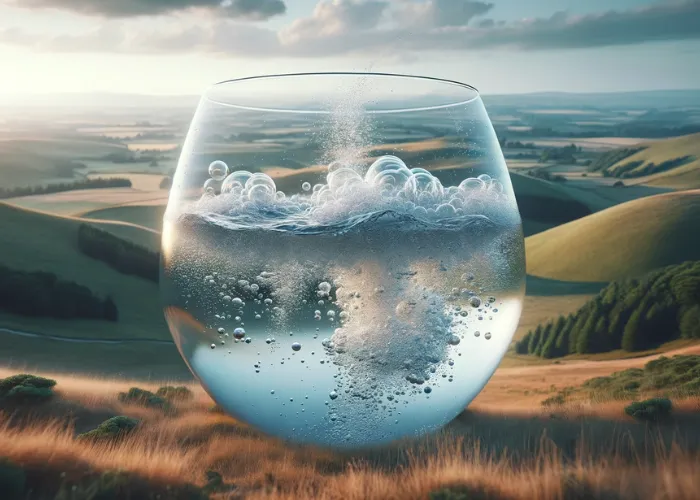
In the brewing world, experimentation is vital, especially with carbonation. Brewers adjust CO2 levels, which can dramatically change the beer’s overall feel and taste.
This tweaking isn’t just technical; it’s an art that can make a beer feel smoother or add a crisp edge to its flavor. It’s a key way brewers create unique and exciting beers.
Craft breweries often lead in this experimentation, using carbonation to separate their beers. They play with carbonation to enhance specific flavors or develop new beer styles.
This approach leads to various beers with unique feel and taste. Adjusting carbonation is a crucial skill in a brewer’s toolkit, whether making a light beer crisper or a stout smoother.
Serving Beer: Techniques and Glassware
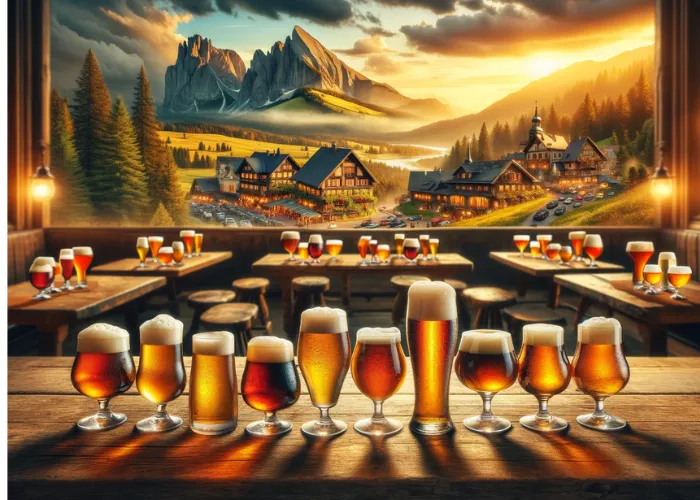
The way beer is significantly served influences its carbonation and overall enjoyment. Key factors include:
- Glassware: Different glasses affect carbonation; tall, narrow glasses better preserve fizz than wide, shallow ones.
- Pouring Technique: A gentle, angled pour maintains carbonation, while a direct pour can cause fizz to dissipate quickly.
- Serving Temperature: The right temperature is crucial; too cold suppresses carbonation, too warm causes it to escape faster.
Each element ensures the beer retains its intended character and provides the best drinking experience.
The Future of Beer Carbonation

The craft beer scene is constantly evolving, and carbonation techniques are advancing. We’re seeing a blend of time-honored methods and cutting-edge innovations shaping the future of beer carbonation. This evolution is marked by:
- Embracing Tradition and Innovation: Brewers are balancing traditional fermentation techniques with modern technology to create new carbonation styles.
- Exploring New Frontiers: The industry is experimenting with different gases, like nitrogen, and varying carbonation levels to craft unique beer experiences.
As these trends continue, the future of beer carbonation promises to bring a diverse array of beers, each offering a distinct taste and texture, to enthusiasts worldwide.
Conclusion

Carbonation is a cornerstone in beer brewing, significantly influencing the beer’s flavor, aroma, and pleasure.
It’s an aspect that resonates with everyone, from the casual beer drinker to the dedicated connoisseur. A deeper understanding of carbonation enriches knowledge and enhances appreciation for the nuances that make each beer unique and enjoyable.
This element, often taken for granted, breathes life into the beer, turning every sip into an experience to be savored.
RELATED POSTS:
- Are Beers Still Good After Freezing? A Thorough Guide
- How Long Does It Take for Beer to Get Cold on Ice?
